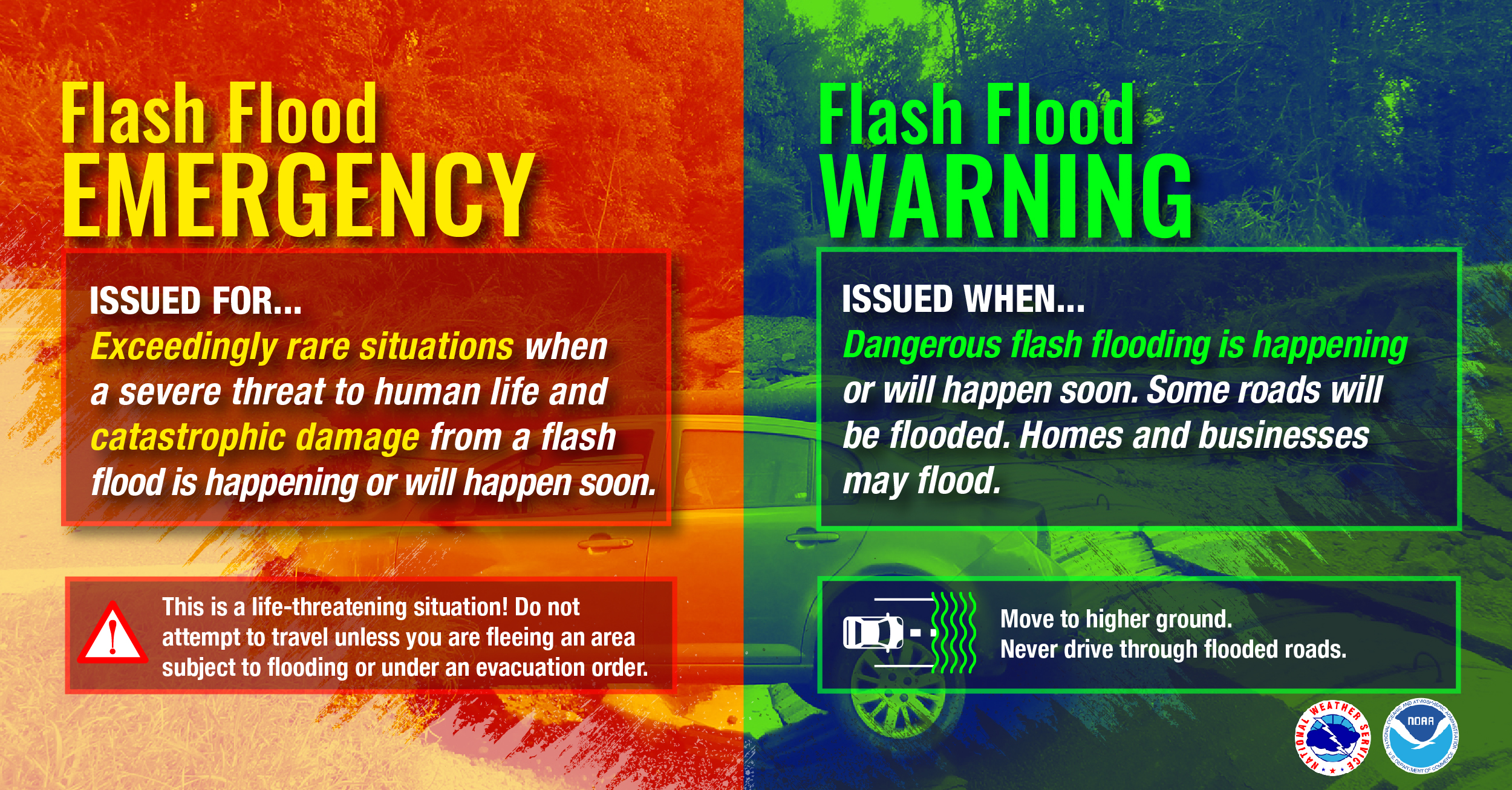Severe Flood Warning: Immediate Safety Steps (NWS)

Table of Contents
Understanding a Severe Flood Warning (NWS)
A Severe Flood Warning from the NWS signifies an imminent and life-threatening flood situation. This is not a drill; rapid, dangerous flooding is already occurring or is expected to begin very soon. It's crucial to understand the difference between various NWS alerts:
- Flood Watch: Conditions are favorable for flooding to develop. Stay informed and be prepared to act.
- Flood Warning: Flooding is occurring or is imminent. Take action immediately.
- Flood Advisory: Flooding is possible or is occurring in specific areas, but it's less severe than a warning.
The NWS uses various methods to disseminate alerts:
- NOAA Weather Radio: A dedicated, reliable source of weather information, even during power outages.
- Weather Apps: Numerous weather apps (like the NWS app) provide real-time alerts and forecasts directly to your smartphone.
- Local News: Television and radio stations frequently broadcast weather alerts.
Key indicators of a Severe Flood Warning include:
- Rapidly rising water levels in rivers, streams, and creeks.
- Heavy and persistent rainfall exceeding the capacity of drainage systems.
- Warnings from local authorities via sirens or emergency alerts.
- Reports of flooding in your area from neighbors or news outlets.
Heeding the warning immediately is paramount; delay can be deadly.
Evacuation Procedures During a Severe Flood Warning
When authorities issue an evacuation order during a Severe Flood Warning, you must evacuate immediately. Delaying can put your life at risk.
Before evacuating:
- Secure your home by locking doors and windows.
- Unplug electrical appliances to prevent damage from potential flooding.
- Gather essential documents (insurance papers, IDs, medical records) and medications.
- If time allows, move valuable items to higher ground.
Evacuation Process:
- Locate pre-designated evacuation routes and shelters using official sources (local emergency management website, NWS website).
- If you have mobility issues or require assistance, contact your local emergency services for help. They have plans in place to help vulnerable populations.
- Bring essential supplies like water, non-perishable food, first-aid kit, blankets, and a change of clothes.
Staying Safe at Home During a Severe Flood (If Evacuation is Not Possible)
If evacuation isn't possible, you must take immediate steps to protect yourself. Remember, staying in a flooded home is extremely dangerous.
Safety Measures:
- Move to the upper floors of your home or a designated safe room.
- If it's safe to do so, turn off gas and electricity to prevent fires or electrocution.
- Monitor flood levels and weather reports continuously.
- Stay away from windows and doors to avoid being hit by debris.
Post-Flood Safety Measures After a Severe Flood Warning
Returning home after a severe flood requires caution. Floodwaters often contain hazardous materials like bacteria, chemicals, and sewage.
Post-Flood Safety:
- Avoid floodwater: It's contaminated and can cause serious health problems.
- Check for gas leaks and electrical hazards: Before entering, ensure the utilities are safe. Call a qualified professional if unsure.
- Assess structural damage: Look for cracks, foundation shifts, or other damage. Report significant damage to the authorities.
- Sanitize affected areas: Thoroughly clean and disinfect all affected areas using appropriate cleaning solutions.
Resources and Further Information for Severe Flood Warnings
Staying informed is vital for preparing for and responding to severe weather events. Here are some essential resources:
- National Weather Service (NWS):
- Federal Emergency Management Agency (FEMA):
- Local Emergency Management Agency: Contact your local government for specific information relevant to your area.
Useful Apps:
- NWS Weather App
- Other reputable weather apps providing alerts and forecasts.
Conclusion: Severe Flood Warning Preparedness is Key
Preparing for severe flood warnings is crucial for protecting your life and property. Understanding the warning system, having an evacuation plan, knowing how to stay safe at home if evacuation isn't possible, and taking proper post-flood safety measures are all essential components of preparedness. Heeding a Severe Flood Warning from the NWS can mean the difference between safety and tragedy. Develop a comprehensive family emergency plan that includes specific steps to take during severe flood warnings and other potential disasters. Remember, preparing for severe flood warnings is not just about surviving; it's about thriving after the storm.

Featured Posts
-
 All Star Weekend Examining The Casting Of Robert Downey Jr In A Hispanic Role
May 26, 2025
All Star Weekend Examining The Casting Of Robert Downey Jr In A Hispanic Role
May 26, 2025 -
 Naomi Kampel Stis Maldives Eikones Apo Tis Eksotikes Diakopes Tis Sta 54
May 26, 2025
Naomi Kampel Stis Maldives Eikones Apo Tis Eksotikes Diakopes Tis Sta 54
May 26, 2025 -
 Blamaz W Polsce Prokuratorzy Unikaja Pytan W Polsce24
May 26, 2025
Blamaz W Polsce Prokuratorzy Unikaja Pytan W Polsce24
May 26, 2025 -
 Southern Vacation Hotspot Rebuts Negative Safety Rating After Shooting Incident
May 26, 2025
Southern Vacation Hotspot Rebuts Negative Safety Rating After Shooting Incident
May 26, 2025 -
 High Stock Market Valuations A Bof A Analyst Explains Why Investors Shouldnt Panic
May 26, 2025
High Stock Market Valuations A Bof A Analyst Explains Why Investors Shouldnt Panic
May 26, 2025
Latest Posts
-
 Mc Kenna Impresses Tuanzebes Strong Week Phillips And Cajuste Face Challenges Ipswich Town Update
May 28, 2025
Mc Kenna Impresses Tuanzebes Strong Week Phillips And Cajuste Face Challenges Ipswich Town Update
May 28, 2025 -
 Phillips Potential Leeds Return Examining The Transfer Talk
May 28, 2025
Phillips Potential Leeds Return Examining The Transfer Talk
May 28, 2025 -
 Leeds United Transfer News Kalvin Phillips Return On The Cards
May 28, 2025
Leeds United Transfer News Kalvin Phillips Return On The Cards
May 28, 2025 -
 Is A Kalvin Phillips Return To Leeds United On The Cards This Summer
May 28, 2025
Is A Kalvin Phillips Return To Leeds United On The Cards This Summer
May 28, 2025 -
 Watch Pacers Vs Bulls Game Time And Streaming Info For March 10
May 28, 2025
Watch Pacers Vs Bulls Game Time And Streaming Info For March 10
May 28, 2025
